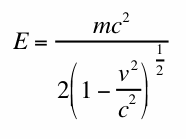Introduction
Within the text of Bridging Physics and Communications: Experimental Detection and Analysis of Web Site Users’ Paths in an Environment of Free Choice, the thesis I wrote in 2000 for my master of arts degree in journalism, I embedded seven essays that each stand alone, yet work together to present the thoughts underlying the thesis itself. These essays originally served as the content appearing in the test Web site.
This is the fourth essay.
Essay
In the postmodern view, processes are systemic and embrace all members of the system.
The recent debate in Kansas over the question of including creationism in the public schools’ science curriculum hearkens back to the famous Scopes trial of the early 1900s. While the cultural climate has changed, the depth of feeling aroused on all sides has not. Beneath the debate over the place of God in the schools, the question of whether creationism is science, the speculation about whether Darwin was correct, there lies a deep question left mostly unarticulated. This question goes to the root of the great shift in our culture from modernism to postmodernism.
If you were to pin down a modernist, he or she would support several key precepts:
- One can describe reality with a discoverable set of laws.
- These laws find their basis in some objective frame of reference.
- This frame of reference can be universally applied.
While the debate in Kansas flames over creationism’s place in biological science, the real shift that has already clinched the move to postmodernism rests in the history of the physics curriculum. At the beginning of this century, when Albert Einstein found the classical physics of Isaac Newton inadequate for describing certain physical phenomena, he made a few adjustments to the system. Einstein’s theory of special relativity sought to describe the behavior, that is the velocity, momentum, dimensions and mass, of bodies as they moved at very high speeds, approaching the speed of light.
For example, Newton’s classical physics states that the kinetic energy of a moving body is expressible in this formula:

In this formula, E is the energy of the body, m is its mass and v is its velocity. This formula would indicate that the energy of a body, as it approaches the speed of light, would increase according to the square of the velocity and would achieve a huge, although finite, value when the body attained the speed of light—186,282 miles per second. But Einstein’s formula looks like this:

What this formula says is that the energy of the moving body approaches an infinite value as its velocity approaches the speed of light. But at small velocities, called non-relativistic velocities, the formula approaches Newton’s formula. This means that Newton’s law ended up being a special case of Einstein’s general insight. Or in other words, the world that Newton observed with his human senses—the same world we know from daily experience—comprises a special set of circumstances from among all the circumstances and conditions that can arise in the known universe.
So while Newton’s laws predicted the behavior of objects, energies and the systems they comprise, as observable by human creatures, the laws did not describe accurately the behaviors of all systems. In the same way, the frame of reference Newton’s laws took to be absolute, was in fact relativistic. But Einstein didn’t mean relative in the sense that it didn’t matter what frame of reference one selected. He meant relative in the sense that there existed no epistemological reason why one should select any particular frame of reference over another.
Thus a physicist would be free to choose a frame of reference that simplified the computations needed to describe the behavior of objects and energies, so long as everyone understood that any other frame of reference would be equally valid, yield an equally accurate depiction of phenomena, but could be much more messy in the process of analysis and computation.
So for example, when I leave the house in the morning to go to work, I don’t think of the path I take in terms of the center of the Milky Way galaxy, but only in terms of the grid of streets crisscrossing Lincoln, Nebraska. But that grid would not work for NASA’s engineers as they seek to send the Chandra X-ray Observatory aloft aboard the space shuttle and onto the right path to put it in orbit around the Earth.
So to go back to the three key precepts of modernism, one can see the changes postmodernism brings to them:
- One can describe reality with a discoverable set of laws.
- These laws find their local expression in a selected frame of reference.
- This frame of reference can be universally applied, but the choice to do so is arbitrary and does not preclude other equally valid choices.
Obviously, the debate begins to ferment as the divergence between the modern and the postmodern versions of precepts two and three becomes apparent.
But what influence gives rise to the divergence between modernism and postmodernism, or leads to the distinction between objectivity and subjectivity as it applies to frames of reference and their applicability? One can make the case that the influence lies in the postmodernist realization that one cannot adequately describe the truth about an entity without describing the processes that lead to, engage and flow from that entity.
At the basic level, this means that the postmodernist view of life embraces the notion that accurate descriptions of systems depend upon depicting the processes that run through and within those systems, as well as the entities and energies that comprise the system. So for example, if one applies this to the creationism vs. evolution debate in Kansas, then one garners the insight that the creationist position is modern, because it attempts to apply a universal frame of reference—a theistic one—to all circumstances and tries to contend that people can be understood apart from the processes that flow through the environment in which they live. The postmodernist solution is to argue that there is no entity or energy that exists apart from the processes that move within the system they comprise. That is, evolution—systemic change through the aggregation of small developments within and among the elements of the system—happens to all elements of a system because it is a systemic process.
In the postmodern view, processes are systemic and embrace all members of the system.
